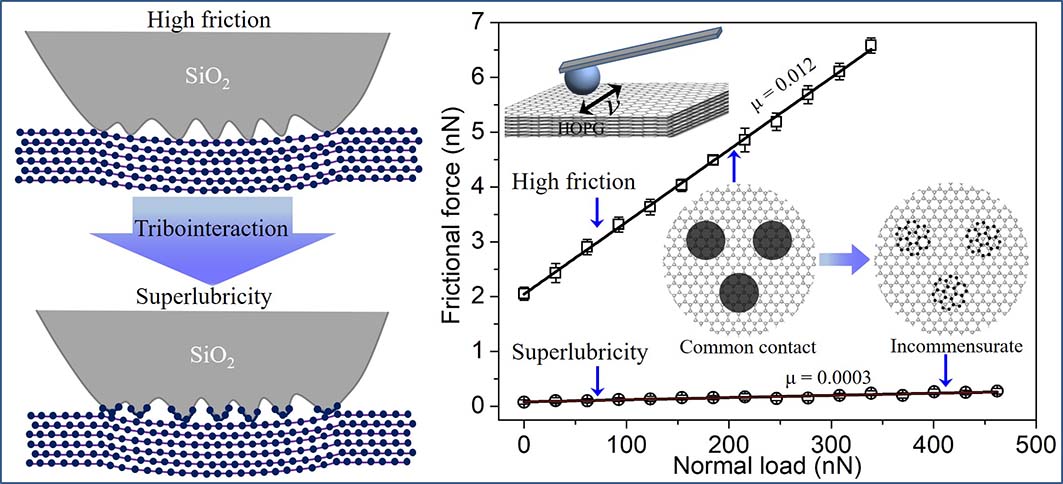Two or three-dimensional layered materials, such as graphene, graphite and molybdenum disulfide, usually exhibit superlubricity properties when sliding occurs between the incommensurate interface lattices. In this article, we report the superlubricity between graphite and silica under ambient conditions, induced by the formation of multiple transferred graphene nanoflakeson the asperities of silica surfaces after the initial frictional sliding. The friction coefficient can reduce to as low as 0.0003 with excellent robustness, and is independent of the surface roughness, sliding velocities and rotation angles. The superlubricity mechanism can be attributed to the extremely weak interaction and easy sliding between the transferred graphene nanoflakes and graphite in their incommensurate contact. This finding has important implications for developing approaches to achieve superlubricity of layered materials at the nanoscale by tribointeractions. This work has been published on international journal AdvancedScience (IF=9), and selected as the frontispiece paper.

The article link: https://onlinelibrary.wiley.com/doi/full/10.1002/advs.201700616


